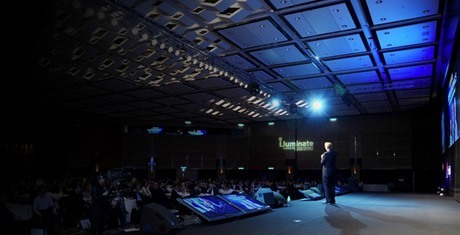
The headline for this article may be a bit misleading. Granted, there are many military conflicts around the world that should be ended, but this war is more immediate and, in many ways, far more personal—not to mention silent!
This refers to ending the war between young and old; a peace that will undoubtedly be of the utmost benefit to you, your other-aged colleagues and your organization.
Move Past Stereotypes
This is a topic where preconceived notions can dominate. In so many words: It’s the young people who “get” technology, who are focused on the future and are open to viewing the future in exciting new ways. By contrast, the “old guys” are the ones mired in the past, unable to envision all that the future holds and convinced that the good old days have turned the corner, never to be seen again.
That’s not true at all. I’ve known younger people who were utterly locked onto the past. I’ve also known many older people who were as focused on and open-minded about the future as anyone could possibly be. It’s not their chronological age or how much or little hair they have on their heads, it’s their mind-set.
Still, there’s no denying that there can often be a significant gulf between the young and the old—and it can be very damaging to an organization.
One of the salient topics of my Anticipatory Organization Model is what I refer to as Futureview. This not only refers to a person’s outlook regarding the future, but also how that outlook can impact their thoughts and actions in the present.
A misdirected Futureview can damage an organization. For instance, a younger employee whose view of the future is negative may not only be looking to move on to another company, her current performance may also reflect that level of discouragement.
An older employee with a similar outlook may also perform far below his ability, since he has little optimism about the future. Moreover, both attitudes may stem from the perception of the “other guy” and all his perceived flaws—one of the many chasms that can separate the young and the old.
Bring Them Together
In an organization that has a positive view of the future and approaches that future with an anticipatory mind-set, it’s critical to end the destructive war between young and older people.
One overriding strategy is to embrace as much as possible what all members of an organization contribute to the overall group. Younger people can offer perspectives, energy and insights that, in their own way, are fresh and often a departure from more established ways of thinking. Older people have experience, knowledge and wisdom—attributes that you can’t acquire by way of a seminar or college course.
Carry that strategy of shared unity into action. For instance, if your organization is holding a strategic planning session where you’re going to be making some key decisions, take a look at the attendee list in advance. Is it composed exclusively of baby boomers? If so, carefully select some younger people to join you in the meeting.
The benefits are powerful. Not only may younger members offer feedback and insights that may not come from their older colleagues, but the inherent message is a powerful one to every young person throughout the organization: You know what? There’s a future here. They actually want to hear what we have to say.
At the same time, older members’ Futureview can receive a shot in the arm. Maybe, just maybe, this organization is in far more capable, thoughtful hands than we thought!
The result: A shared, positive view of the future. What are you doing to end the war in your organization?










